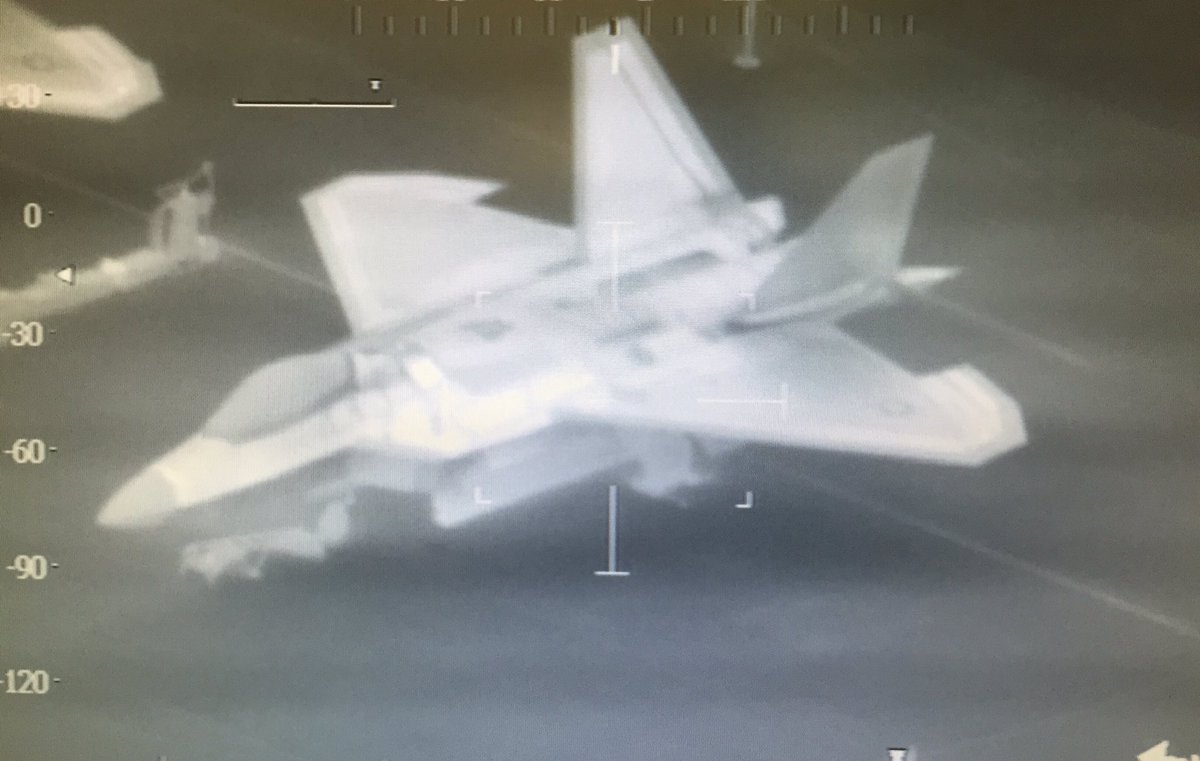Needless to say, stealth does not mean “invisible”…
The above image was posted by the National Police Air Service helicopter serving the South West of England.
It’s a screenshot from the thermal camera used by the EC-135 of the NPAS, based at Filton Aerodrome, west of Swindon, and shows one of the U.S. Air Force F-22 Raptor jets that deployed to RAF Fairford to take part in the Royal International Air Tattoo airshow, on the ground, at RAF Fairford, UK.
The photo is somehow funny, as it depicts the stealth 5th generation jet more or less as it would look like in a combat flight simulator, and interesting, because the IR camera caught the parked Raptor’s heat signature more or less in the same way an infra-red search and track (IRST) systems would perform passive detection of a radar evading plane.
In fact, F-22s and other stealth planes have literally no (or extremely little) radar cross-section (RCS) but they do have an IR signature. This means that they can be vulnerable to small, fast non-stealthy planes that feature low observable coatings and using their IRST sensors, hi-speed computers and interferometry, to geo-locate enemy LO (low observability) aircraft.
Indeed, there are certain scenarios in which IRST and other tactics could greatly reduce the advantage provided by radar invisibility and this is one of the reasons why USAF has fielded IRST pods to Aggressors F-16s in the latest Red Flags as proved by shots of the Nellis’s Vipers carrying the Lockheed Martin’s AN/AAS-42.
This type of system, also carried by F-15E Strike Eagles, and equipping some other modern combat planes, including the Euro-canard Eurofighter Typhoon or Dassault Rafale, lets the aggressor passively look for the IR signature of the enemy stealth fighter.
According to some pilots who have fought against the F-22, the IRST can be extremely useful to detect “large and hot stealth targets” like the F-22 (or the even hotter F-35) during mock aerial engagements at distances up to 50 km. Anyway, that’s another story.
For the moment enjoy a cool and unsual shot of the Raptor, that has been one of the highlights of this year’s RIAT.
Image credit: NPAS Filton
Related articles





















